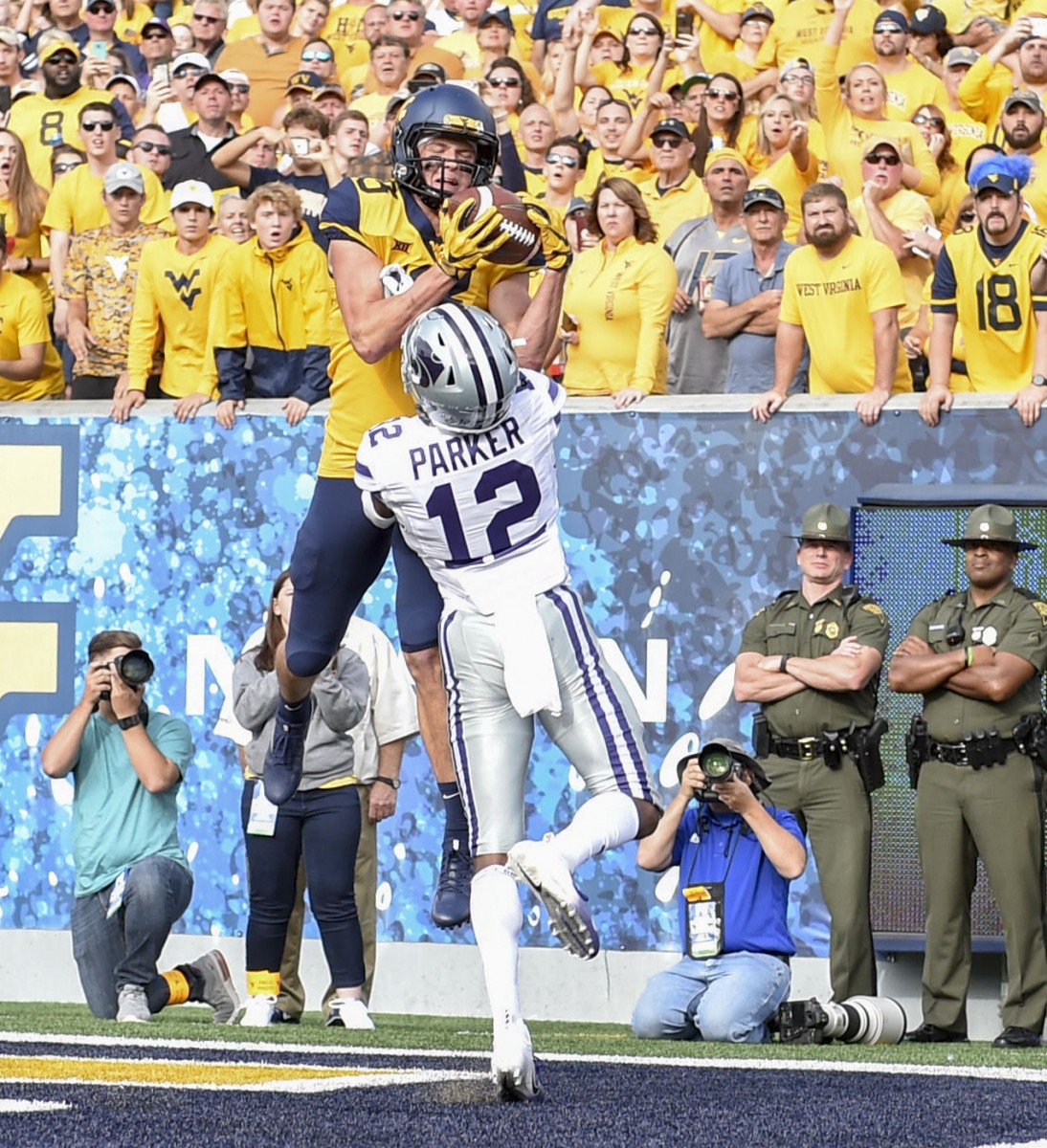MORGANTOWN — Will Grier is not the only potential award-winner on West Virginia’s offense.
Wide receiver David Sills provided a reminder that he is one of the nation’s most reliable targets, hauling in three of Grier’s five touchdown passes as the 12th-ranked Mountaineers (3-0, 1-0) rolled over Kansas State 35-6 in the Big 12 opener for both teams.
Sills finished the game with 10 catches for 73 yards on 12 targets.
For Sills, it was a refreshing contrast to WVU’s Week 2 game against Youngstown State.
The Penguins were determined to let anybody but Sills beat them, dedicating two defenders to him at all times and limiting him to two catches for 33 yards. The Wildcats (2-2, 0-1) gave more respect to the rest of WVU’s receiving corps, but the result was death by Sills-inflicted paper cuts.
“It was very refreshing [to see single coverage], especially down near the goal line,” Sills said. “That’s always nice to see. And I think Will loved seeing it just as much as I do.”
All three of Sills’ scores were of the dinkiest variety – a trio of 1-yard completions. But those receptions demonstrated exactly why he’s such a potent weapon. In situations where most teams would hand it off or look for a brawny tight end, the Mountaineers have their pesky 6-foot-4, 210-pound former high school quarterback available to finish drives.
“He’s lethal in the red zone, man,” Grier said. “He’s big, he’s long, and he makes tough catches. Any time we have space down there, he does such a good job of putting himself in-between and getting the ball no matter what it takes.”
Holgorsen said it was a matter of taking what the defense was giving to the Mountaineers.
“Their philosophy on defense is to put five defensive linemen in there and they’ve got everybody in the box,” Holgorsen said. “We had packages with two tight ends and a fullback. We had a package where we didn’t even have a receiver out there. But that doesn’t make sense when we have David Sills.”
Sills’ toughest grab was the one that likely shut the door on whatever dreams the Wildcats had of mounting a second-half comeback.
With just 6 seconds left in the first half, Grier lobbed a pass over the head of Kansas State cornerback AJ Parker towards the corner of the end zone. Sills made the difficult play look routine, leaping above Parker’s reach to snag the throw that gave the Mountaineers a 21-0 halftime lead.
The pattern, an end-zone fade, is difficult to execute near the goal line due to the lack of available space.
“Fade routes on the goal line are low-percentage in general,” said WVU coach Dana Holgorsen. “But when you have those guys? It’s pretty high-percentage. So we’ll keep rolling with it.”
According to Sills, a fade wasn’t the original play call.
“We originally wanted a slant, but Will and me have a little communication language and we ended up changing it to a fade because of [Parker’s] leverage,” Sills said. “He ended up throwing a ball and giving me a chance. I just did my best to go up and get it.”
It takes plenty of practice time to develop the connection and trust that Grier and Sills share – and as they demonstrated against Kansas State, they’ve put that work in.
“Most of it is just being on the same page as the quarterback,” Sills said. “You know where the ball is going to be, and he knows where to put the ball. That’s the biggest thing. A lot of trust goes to an end-zone fade because you’re throwing over a defensive back. I think we’ve built that trust in each other.”




